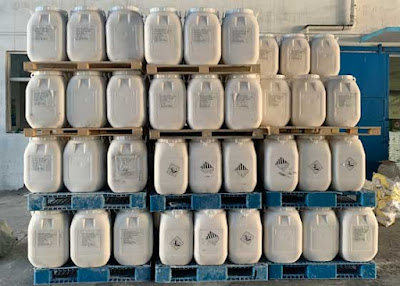Uses and Advantages of NaDCC Disinfectants
NaDCC disinfectant would be the approach to take if you are searching for a powerful, non-toxic disinfectant for water. NaDCC disinfectant tablets, also known by the technical name of sodium dichloroisocyanurate, certainly are a popular supply of chlorine for disinfection as it is an application of hypochlorous acid.
The sodium salt of a chlorinated hydroxytriazine is sodium dichloroisocyanurate (SIDC), prevalently known as NaDCC disinfectant. It is popular as a free supply of chlorine to disinfect water.
Owing to its high efficiency, low toxic disinfection, and broad spectrum, NaDCC powder is considered an option to other cleaning agents like bleaching powder and sodium hypochlorite. In addition, it includes a strong impact on bacteria, viruses, and bacteria spores. It could also kill algae, improving the quality of water.
NaDCC comes in powder, granular, tablet forms. The chlorine content can vary greatly slightly with respect to the form used.
Properties of NaDCC Disinfectant
Stability
NaDCC in the solid tablet state, in the proper execution of hypochlorous acid, is considered a well balanced supply of free available chlorine (FAC). At the molecular level, NaDCC has a reasonably stable triazine ring. The merchandise is resistant to sunlight, and the chlorine value is comparatively maintained under dry and cool conditions.
Effective Sterilization
NaDCC, when dissolved in water, releases only half its chlorine content in the water. One other half is released when the FAC in the water is utilized. The sterilization effect supplied by NaDCC is 100 times more efficient than that of sodium hypochlorite. One can utilize the product to sterilize paper and fabrics as well.
Efficient Chlorine Utilization
NaDCC is useful despite having low temperatures of water. NaDCC will release its chlorine content and ensure they have been thoroughly utilized. They further have the capacity to maintain the available chlorine value in the water.
Reduced Toxicity
According to a risk assessment report by WHO, NaDCC has low quantities of oral toxicity. Therefore, one can utilize the product safely to disinfect normal water. With the toxicity of NaDCC being 700mg/kg, it does have no undesireable effects on humans or the environment.
What are the Applications of NaDCC Disinfectant
When put into the water, NaDCC disinfectant tablets dissolve and release FAC in the water. This FAC has reacted with the microorganisms in the water and kills them in the pr. NaDCC doesn't have any smell, nor does it leave any taste in the water. This is exactly why NaDCC is employed for disinfecting water safety. For more chlorine swimming pool chemicals from our web.
What are the Advantages of Using NaDCC Disinfectant Tablets
Easy to Use
NaDCC in tablet form is significantly easier to handle, store, and employ than powder form, liquids, or aerosols. You also steer clear of the risk of missing or spillage, which can occur when utilizing liquid bleach. One can quickly and safely mix these tablets with water.
Purify Water
While camping or hiking, you should use these tablets to purify water from lakes and rivers for outdoor water shortage. You could have quick access to wash water, which may be employed for drinking, showering, and washing produce.
Keep Water Tanks and Pipelines Clean
NaDCC may be used to make the entire water tank and pipelines safe and clean. It prevents algae formation in storage tanks, purifies water, and also maintains residual chlorine levels.
Shelf Life
The shelf life of bleaching products is around six months, whereas the shelf life of NaDCC disinfectants is approximately five years. They tend to complete well, even yet in tropical climates.
NaDCC disinfectants are a well balanced supply of chlorine.They're an easy task to store and have a longer shelf life. They're also more efficient disinfectants as compared to other cleaning agents like bleach. NaDCC disinfectants are widely utilized in domestic and industrial applications.




Comments
Post a Comment